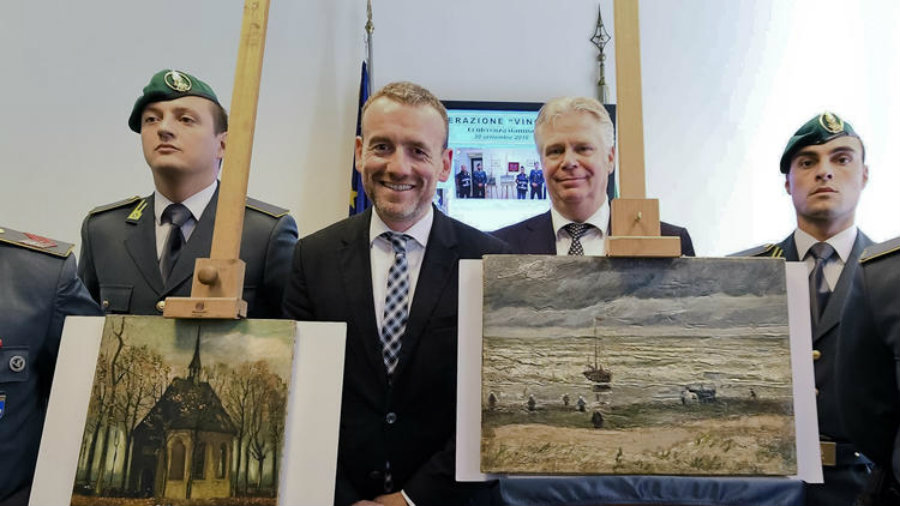Italian authorities found two paintings by Vincent Van Gogh, which were stolen in 2002 during a robbery of the Van Gogh Museum in Amsterdam, Netherlands.
The paintings are “Seascape at Scheveningen,” dating back to 1882, and “Congregation Leaving the Reformed Church in Nuenen,” painted between 1884 and 1885. The works of art were lacking their frames and showed only slight damages.

Museum historians praised the Italian authorities finding the paintings, as the works have unprecedented historical significance.
One of the greatest art heists in history
The painting representing the Nuenen church shows where Van Gogh’s father served as a pastor, and the picture has been labeled to have a significant sentimental value. Vincent Van Gogh painted it for his mother and then added mourners to the picture in 1885, just after his father had passed away.
The scene at sea is a sample of Van Gogh’s earlier style of painting. Museum historians classify it as historically significant as it portrays a chapter in Van Gogh’s career and ever-evolving artist perspective.
The works of art were stolen when thieves climbed on the Van Gogh Museum’s rooftop to enter the building. They used movie-like techniques and found themselves on the FBI’s list of most intricate global art crimes. The thieves were caught and convicted due to DNA remains found at the scene, although they were sentenced to only four years in prison, even if the historical pieces were not retrieved.
The paintings were found wrapped in cloth inside a country house, just south of Naples, which belonged to drug trafficker Raffaele Imperiale. 41-year-old Imperiale participated in an international cocaine distribution ring with notable mobsters of the Camorra clan, portrayed in the 2008 film Gomorrah, ranked as one of the best mobster films ever released.
Raffele Imperiale is currently on the run, but investigators believe that he’s hiding in Dubai, posing as a construction manager. Authorities found the paintings thanks to the accounts of 11 of his accomplices which were arrested earlier this year. Apparently, Imperiale bought the paintings with drug money, alongside several boats, 49 real estate properties, an airplane and a combined fortune of 20 million euros distributed along 88 bank accounts.
According to the FBI, the paintings were part of the ten most famous art crimes. Both canvases add up to a value of $112 million.
But the paintings cannot return to their safe haven as of yet since they are classified as evidence for the upcoming trials.
Vincent Van Gogh was a Dutch painter who managed to yield over 2000 art pieces, including portraits, landscapes and still lifes. He was known for his extensive use of color and expressive brushstrokes. Van Gogh suffered from mental disorders and regularly delved into drinking.
After threatening fellow artist Paul Gauguin with a razor, Van Gogh cut his left ear, although he then entered to one of the most productive chapters of his life. In 1890, when he was 37 years old, Van Gogh shot himself in the chest with a revolver. Doctors tried to remove the bullet but failed to do so. They left him alone in his room as he smoked his pipe until his death. Reportedly, his last words were “the sadness will last forever.”
Source: Reuters
